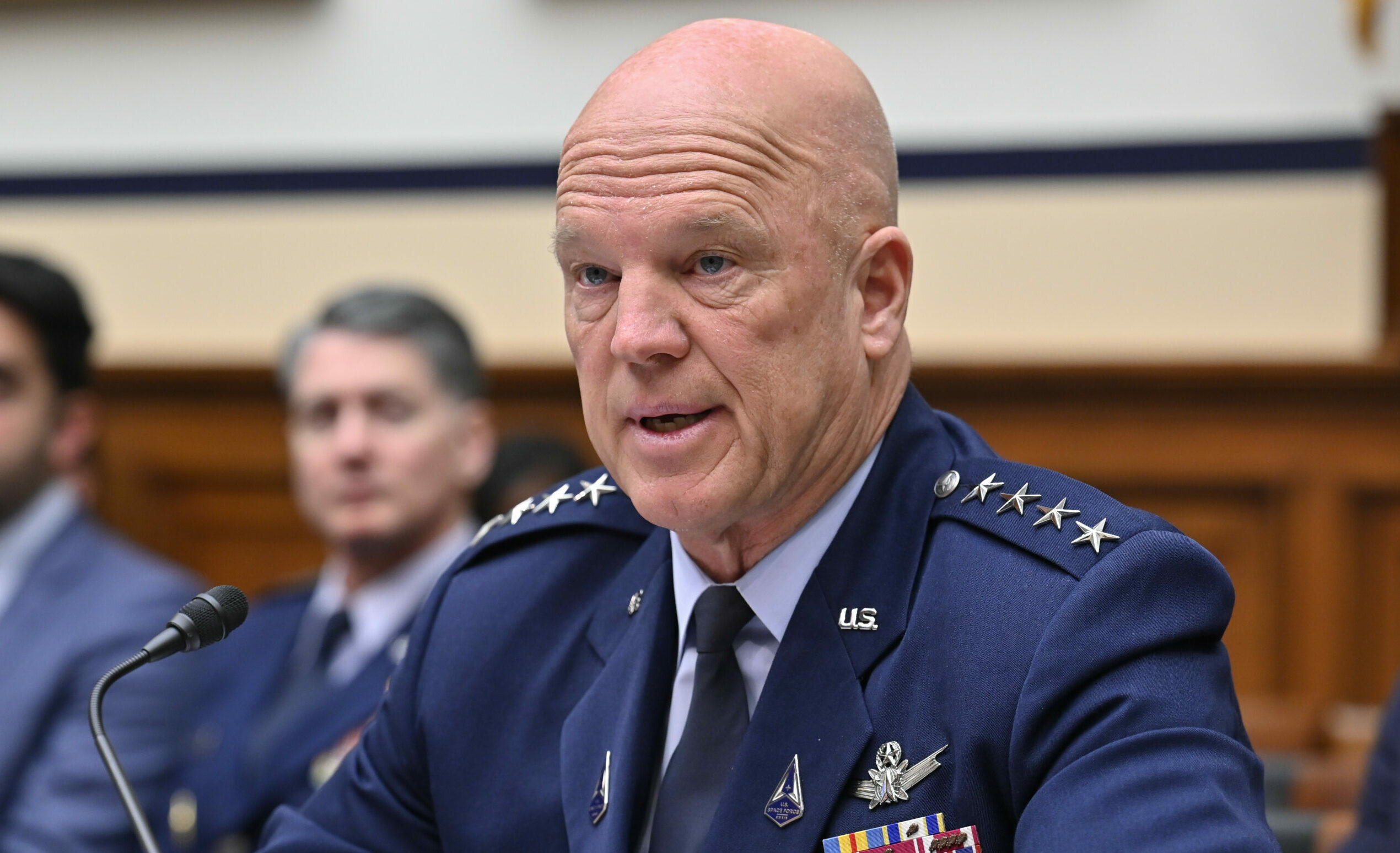Gen. John Raymond said the the Space Force might consider working with more than two launch companies as more players enter the industry
WASHINGTON – Two space launch companies – United Launch Alliance and SpaceX – currently are under contract to launch military and intelligence satellites for the U.S. Space Force. But when these contracts are up for recompete in 2024, the Space Force might consider working with more than two companies, Chief of Space Operations Gen. John “Jay” Raymond told lawmakers April 27.
“We are really at a transformation point in space,” Raymond said during a House Armed Services Committee hearing on the Department of the Air Force’s fiscal year 2023 budget request.
Committee Chairman Rep. Adam Smith (D-Wash.) pressed Raymond to shed light on the Space Force’s future plans to buy space launch services as more companies enter the market. Smith has been a longtime critic of the military launch program, arguing that it does not provide enough opportunities for new entrants.
ULA and SpaceX in 2020 won National Security Space Launch five-year contracts known as Phase 2. ULA got 60% and SpaceX 40% of the projected national security missions over the five-year contract.
The Space Force has held meetings with the launch industry and has asked for their input in preparation for a new competition for Phase 3 contracts. Raymond said there’s a real possibility that more than two launch providers could be selected in order to “promote competition.”
“I think there’s opportunities, with a manifest that’s becoming more significant in numbers, that there’s room for increased competition,” Raymond said.
Space Force officials said the Phase 3 contract is likely to include other services beyond the traditional launches from Earth to orbit. There is interest in buying, for example, in-space transportation services from space tugs that move satellites across orbits.
Smith in recent years has pushed the military to open up opportunities for new players in the launch industry such as Blue Origin, based in Smith’s home state.
“I very much believe that we have a huge opportunity in space, that there are so many companies, certainly the big ones that we’ve heard about, SpaceX, Blue Origin, others, but then gosh, probably a dozen others that are smaller,” he said. “And if we can encourage that competition, I think we can get a better product for a better price. So I want to make sure we do that. “
Blue Origin is developing a large rocket, New Glenn, and is expected to challenge ULA and SpaceX for national security contracts. Two well-funded emerging players in the small launch market — Rocket Lab and Relativity Space — last year revealed they are developing medium rockets aimed at the commercial market but also perhaps with Phase 3 of NSSL in mind.
Another issue that could affect the selection of launch companies for Phase 3 is a projected transition to smaller satellites. “In the past, historically, a rocket would put one satellite up, or two satellites up,” said Raymond. “What we’re seeing now is a rocket putting 80 satellites up, if you will, at a time,” he said. “And so all that goes into account as we look forward to what a Phase 3 would look like.”
The Pentagon in budget documents estimates it will spend more than $10 billion on national security space launch over five years, with 35 missions projected from fiscal year 2023 through 2027.
The Space Force also has a separate budget for space launches by the Space Development Agency. SDA is building a constellation of small satellites in low Earth orbit for communications and missile detection, and plans to launch them in batches. The agency expects to spend $1.4 billion on launch services between 2023 and 2027.
